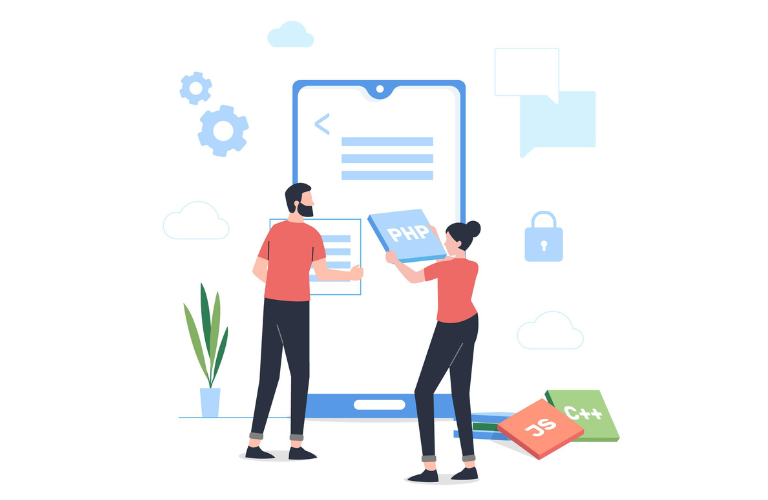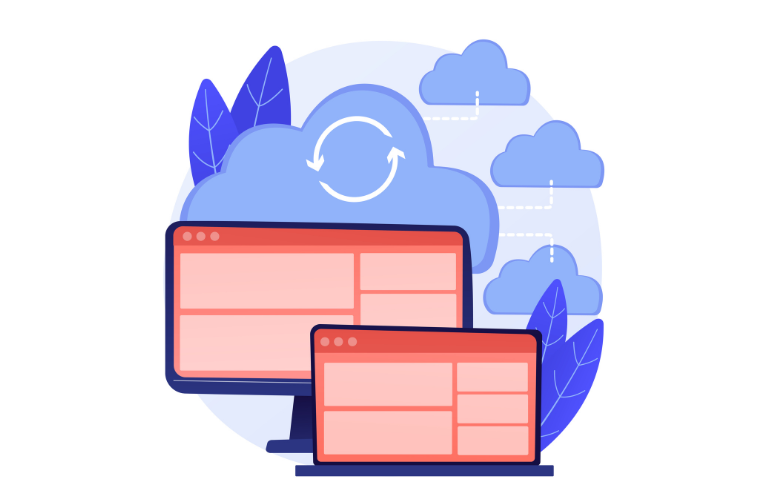In 2025, Deploying AI Microservices with Laravel and Kubernetes is revolutionizing how developers build scalable, efficient, and reliable web applications. Laravel, a powerful PHP framework, paired with Kubernetes, the leading container orchestration platform, offers a dynamic duo for modernizing AI-driven microservices.
Whether you’re tackling slow performance, managing high traffic, or ensuring seamless scalability, this guide walks you through the process. From containerizing Laravel applications to leveraging Kubernetes for deployment, you’ll discover actionable steps, time-saving shortcuts, and real-world use cases to address common pain points.
Table of Contents
Why Use Laravel and Kubernetes for AI Microservices?
Laravel’s elegant syntax and robust tools simplify backend development for AI microservices. Its MVC structure streamlines data handling, API creation, and integration with machine learning models. Kubernetes, born from Google’s expertise, excels at orchestrating containers, ensuring your AI microservices scale effortlessly across servers. Together, they solve issues like inconsistent environments, manual scaling delays, and downtime during updates.
Deploying AI Microservices with Laravel and Kubernetes empowers you to:
- Package applications and dependencies for portability
- Automate scaling to handle unpredictable AI workloads
- Enable self-healing for uninterrupted service
- Simplify deployment with consistent, reproducible setups
This combination is ideal for high-traffic APIs, real-time AI inference, or microservices architectures.
Prerequisites for Success
Before diving into Deploying AI Microservices with Laravel and Kubernetes, ensure you have the essentials ready. These tools and setups lay the foundation for a smooth process.
- A Laravel application (version 7 or later) with AI integration (e.g., API endpoints for ML models)
- Docker installed for containerization
- Kubectl for Kubernetes cluster interaction
- A Kubernetes cluster (e.g., Minikube for local testing, or cloud providers like DigitalOcean, AWS, or GCP)
- A Docker Hub account for storing container images
- Basic familiarity with PHP, Docker, and YAML
Step 1: Building Your Laravel AI Microservice
Start by creating or adapting a Laravel application for AI microservices. For this guide, imagine a simple app that serves AI predictions via an API endpoint, connecting to a machine learning model for real-time inference.
First, navigate to your home directory and create a new Laravel project using Docker and Composer:
cd ~ docker run –rm -v $(pwd):/app composer create-project –prefer-dist laravel/laravel ai-laravel-k8s
cd ai-laravel-k8sNext, modify the welcome blade to test connectivity with a database or an AI model endpoint. Open ./resources/views/welcome.blade.php and add a simple check:
AI Model Connected:
@php
try {
$response = Http::get('http://your-ai-model-endpoint/predict');
echo $response->successful() ? 'Connected' : 'Failed';
} catch (\Exception $e) {
echo 'None';
}
@endphpThis snippet tests if your Laravel app can reach an AI model endpoint, displaying “Connected” or “None” on the welcome page.
Step 2: Containerizing Your Laravel Application
Deploying AI Microservices with Laravel and Kubernetes requires containerizing your app. Docker packages your Laravel code, dependencies, and runtime into a portable image. Here’s how to do it efficiently.
Create a Dockerfile in your project root to define the container:
FROM php:7.4-apache# Install dependencies
RUN apt-get update && apt-get install -y \
git \
zip \
curl \
sudo \
unzip \
libicu-dev \
libbz2-dev \
libpng-dev \
libjpeg-dev \
libmcrypt-dev \
libreadline-dev \
libfreetype6-dev \
g++# Set Apache document root
ENV APACHE_DOCUMENT_ROOT=/var/www/html/public# Update Apache configuration
RUN sed -ri -e 's!/var/www/html!${APACHE_DOCUMENT_ROOT}!g' /etc/apache2/sites-available/*.conf \
&& sed -ri -e 's!/var/www/!${APACHE_DOCUMENT_ROOT}!g' /etc/apache2/apache2.conf /etc/apache2/conf-available/*.conf# Enable Apache modules
RUN a2enmod rewrite headers# Install PHP extensions
RUN docker-php-ext-install \
bz2 \
intl \
iconv \
bcmath \
opcache \
calendar \
pdo_mysql# Set log channel to stderr
ENV LOG_CHANNEL=stderr# Define volume
VOLUME /var/www/html# Copy Composer from official Composer image
COPY --from=composer:latest /usr/bin/composer /usr/bin/composer# Copy application code
COPY . /var/www/tmp# Install Composer dependencies without dev packages
RUN cd /var/www/tmp && composer install --no-dev# Make entrypoint executable
RUN chmod +x /var/www/tmp/docker-entrypoint.sh# Set entrypoint
ENTRYPOINT ["/var/www/tmp/docker-entrypoint.sh"]# Default command
CMD ["apache2-foreground"]Create a docker-entrypoint.sh to move files and set permissions:
#!/bin/bash# Copy application files from tmp to html directory
cp -R /var/www/tmp/. /var/www/html/# Set ownership to www-data
chown -R www-data:www-data /var/www/html# Execute the container’s main process (CMD)
exec "$@"Exclude unnecessary files with a .dockerignore:
.env /vendorBuild and test the image locally:
# Build the Docker image
docker build -t your_docker_hub_username/ai-laravel-k8s:latest .# Run the Docker container
docker run -ti -p 8080:80 \
-e APP_KEY=base64:cUPmwHx4LXa4Z25HhzFiWCf7TlQmSqnt98pnuiHmzgY= \
your_docker_hub_username/ai-laravel-k8s:latestVisit http://localhost:8080 to confirm the app runs and connects to your AI endpoint.
Step 3: Pushing to a Container Registry
To enable Deploying AI Microservices with Laravel and Kubernetes, share your image via a registry like Docker Hub. Log in and push your image:
docker login -u your_docker_hub_username docker push your_docker_hub_username/ai-laravel-k8s:latestYour image is now accessible for Kubernetes to deploy.
Step 4: Crafting Kubernetes Manifests
Kubernetes uses YAML manifests to define resources. Deploying AI Microservices with Laravel and Kubernetes involves creating deployment, service, and ingress files.
Create a deployment manifest for scaling and resilience:
apiVersion: apps/v1
kind: Deployment
metadata:
name: ai-laravel-k8s
labels:
app: ai-laravel-k8s
spec:
replicas: 3
selector:
matchLabels:
app: ai-laravel-k8s
template:
metadata:
labels:
app: ai-laravel-k8s
spec:
containers:
- name: ai-laravel-k8s
image: your_docker_hub_username/ai-laravel-k8s:latest
ports:
- containerPort: 80
env:
- name: APP_KEY
value: base64:cUPmwHx4LXa4Z25HhzFiWCf7TlQmSqnt98pnuiHmzgY=
- name: DB_HOST
value: mysql
- name: DB_PORT
value: "3306"
- name: DB_DATABASE
value: ai_database
- name: DB_USERNAME
valueFrom:
secretKeyRef:
name: mysql-secret
key: username
- name: DB_PASSWORD
valueFrom:
secretKeyRef:
name: mysql-secret
key: passwordExpose the app within the cluster with a service:
apiVersion: v1
kind: Service
metadata:
name: ai-laravel-k8s
labels:
app: ai-laravel-k8s
spec:
ports:
- name: http
port: 80
targetPort: 80
selector:
app: ai-laravel-k8s
Expose it externally with an ingress:
apiVersion: networking.k8s.io/v1
kind: Ingress
metadata:
name: ai-laravel-k8s
annotations:
nginx.ingress.kubernetes.io/rewrite-target: /
spec:
rules:
- host: ai-laravel-k8s.example.com
http:
paths:
- path: /
pathType: Prefix
backend:
service:
name: ai-laravel-k8s
port:
name: httpStep 5: Deploying to Kubernetes
Now, execute Deploying AI Microservices with Laravel and Kubernetes by applying your manifests. Start with secrets and deploy:
# Create a secret for MySQL credentials
kubectl create secret generic mysql-secret \
--from-literal=username=admin \
--from-literal=password=password
# Apply the Laravel Deployment
kubectl apply -f laravel.yaml
# Apply the Laravel Service
kubectl apply -f laravel-service.yaml
# Apply the Laravel Ingress
kubectl apply -f laravel-ingress.yaml
Verify deployment with:
# Get all pods
kubectl get pods
# Get all services
kubectl get services
# Get the external URL for the ai-laravel-k8s service
minikube service --url=true ai-laravel-k8sYour AI microservice is live, scalable, and resilient!
Time-Saving Shortcuts
Deploying AI Microservices with Laravel and Kubernetes can be streamlined with these shortcuts:
- Use Devtron for automated Dockerfile and manifest creation
- Leverage Helm charts (e.g., LAMP chart) for pre-configured setups
- Test locally with Minikube to avoid cloud costs during development
- Automate CI/CD with tools like GitHub Actions or Jenkins
Real-World Use Case: AI-Powered Recommendation Service
Imagine an e-commerce platform needing a recommendation engine. Deploying AI Microservices with Laravel and Kubernetes shines here. Laravel handles API requests, connects to a Python-based ML model for predictions, and returns results. Docker containerizes the app, while Kubernetes scales pods to handle peak shopping traffic. Autoscaling adjusts replicas, and self-healing restarts failed pods, ensuring uptime. The result? Fast, reliable recommendations boosting user engagement.
Challenges and Solutions
Deploying AI Microservices with Laravel and Kubernetes isn’t without hurdles. Here’s how to tackle common issues:
- Large Image Sizes: Use multi-stage builds and lightweight base images like Alpine.
- Resource Overuse: Set CPU and memory limits in your deployment YAML.
- Downtime Risks: Implement rolling updates for zero-downtime deployments.
Monitoring and Maintenance
Post-deployment, monitor your cluster for reliability. Tools like Prometheus and Grafana track performance, alerting you to downtime or resource spikes. Run Laravel Artisan commands for maintenance:
cd ~ kubectl get pods kubectl exec ai-laravel-k8s-77fb989b46-wczgb — php artisan migrate –force
Conclusion
Deploying AI Microservices with Laravel and Kubernetes in 2025 unlocks scalability, reliability, and efficiency for modern applications. This guide covered building a Laravel app, containerizing it with Docker, crafting Kubernetes manifests, and deploying with time-saving tricks. Whether for AI inference, APIs, or web apps, this approach solves performance and scaling pain points. Start with Minikube for testing, explore Helm for simplicity, and check resources like the Kubernetes Documentation (https://kubernetes.io/docs/home/) for deeper insights. Ready to modernize? Your journey begins now!
FAQs
1. What is Deploying AI Microservices with Laravel and Kubernetes?
Deploying AI Microservices with Laravel and Kubernetes involves using the Laravel PHP framework to build AI-driven microservices and Kubernetes to orchestrate and scale them in containers. It combines Laravel’s elegant tools for backend development with Kubernetes’ ability to manage, scale, and ensure reliability for AI applications.
2. Why should I use Laravel and Kubernetes for AI microservices?
Laravel simplifies API creation and model integration, while Kubernetes automates scaling, self-healing, and deployment across servers. Together, they tackle slow performance, inconsistent environments, and high-traffic demands, making Deploying AI Microservices with Laravel and Kubernetes ideal for modern apps.
3. What do I need to start Deploying AI Microservices with Laravel and Kubernetes?
You’ll need:
- A Laravel app (version 7 or later) with AI integration
- Docker for containerization
- Kubectl for cluster interaction
- A Kubernetes cluster (e.g., Minikube, DigitalOcean, AWS)
- A Docker Hub account
- Basic knowledge of PHP, Docker, and YAML
4. How do I containerize a Laravel app for Kubernetes?
Create a Dockerfile to package your Laravel app, dependencies, and runtime. Build the image with docker build -t your_username/ai-laravel-k8s:latest ., test it locally, and push it to a registry like Docker Hub using docker push your_username/ai-laravel-k8s:latest.
5. Can I test Deploying AI Microservices with Laravel and Kubernetes locally?
Yes! Use Minikube to run a local Kubernetes cluster. Build your Docker image, create YAML manifests for deployment and services, and apply them with kubectl apply -f file.yaml. Test your app at the URL provided by minikube service –url=true ai-laravel-k8s.
6. How does Kubernetes help scale AI microservices?
Kubernetes scales your Laravel-based AI microservices by managing multiple container replicas. Use commands like kubectl scale –replicas=3 deployment/ai-laravel-k8s to handle increased traffic, and enable autoscaling to adjust dynamically based on load.
7. What tools simplify Deploying AI Microservices with Laravel and Kubernetes?
Time-saving tools include:
- Devtron: Automates Dockerfile and manifest creation
- Helm: Offers pre-configured charts like LAMP for quick setups
- Prometheus and Grafana: Monitor cluster health and performance
- These streamline deployment and maintenance.




